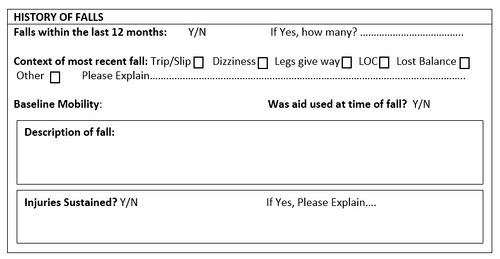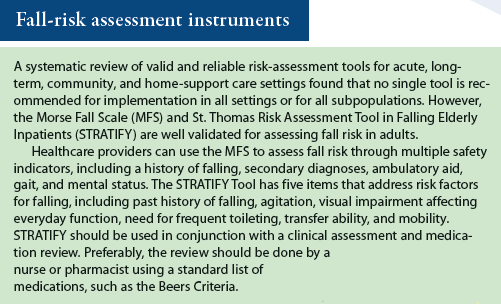Some Ideas on Dementia Fall Risk You Should Know
Table of ContentsDementia Fall Risk Can Be Fun For EveryoneThe Only Guide to Dementia Fall RiskWhat Does Dementia Fall Risk Mean?Dementia Fall Risk - The FactsGetting The Dementia Fall Risk To Work
Based on signs and signs and symptoms, such as proof of head injury or a new focal neurologic deficiency, computed tomography or MRI of the mind may be suggested. An assessment for root causes of syncope should be carried out just if there is strong uncertainty, as in the case of persistent, unexplained drops
Healthcare carriers make use of an autumn risk assessment to identify your danger elements for falling and make practical referrals. Some people try to minimize their fall risk by limiting their activity or making every effort to be extra cautious. But these well-intentioned actions aren't enough. A fall risk assessment is necessary because recognizing which variables increase your opportunities of falling helps you: Minimize your threat of dropping or hurting on your own.
Optimize your capacity to relocate and be energetic. Maintain a healthy and balanced, independent life. All adults 65 years and older must have a first loss risk testing. Your medical care service provider could ask you whether you: Feel unstable when standing or walking. Have dropped in the previous year. Worry about dropping. If you address yes to any of these questions, your doctor will advise an additional, more extensive evaluation.
The Only Guide to Dementia Fall Risk

Discover this detailed nursing care strategy and monitoring overview to successfully protect against risk for drops amongst clients. Get necessary expertise concerning the nursing evaluation, nursing diagnosis, and objectives particularly tailored to people who go to danger for falls. A is specified as an occasion that causes an individual coming to rest accidentally right here on the ground or flooring or other reduced level (WHO, 2021).
Dropping is the 2nd leading reason of death from unintended injuries internationally. It is estimated that loss fatality prices in the United state
What Does Dementia Fall Risk Do?
If this price continues, the CDC anticipates seven fall fatalities every hour by 2030.
Each year, over 800,000 individuals are hospitalized since of drops. Nurses play a major duty in protecting against falls for their patients through education and learning, evaluating loss risk, producing safer settings, and offering treatments in avoiding injuries from drops.
Autumns are due to a number of factors, and an all natural approach to the individual and setting is essential. Expect an individual is thought about at high risk for drops after the testing.
Examine This Report on Dementia Fall Risk
A calls for making use of a verified device that scientists have checked out to be beneficial in naming the sources of falls in a person. As a person's wellness and conditions adjustment, review is required. The level of fall risk can be determined making use of the analysis of innate and external variables. Criterion assessment devices can also be used (talked about listed below).
People are a lot more likely to drop once more if additional hints they have maintained one or more drops in the past 6 months. The older population is at increased danger of fall-related readmissions based on a research study recognizing the variables predictive of repeat drops associated outcomes (Prabhakaran et al., 2020).
The capacity of individuals to safeguard themselves from falls is influenced by such factors as age and development. Older individuals with weak muscle mass are more likely to fall than those that preserve muscular tissue strength, adaptability, and endurance.
All About Dementia Fall Risk
Less comparison level of sensitivity was quite related to both boosted rates of falls and various other injuries, while decreased visual skill was just associated with increased autumn rate (Timber et al., 2011). Sensory understanding of ecological stimuli is critical to safety. Vision and listening to problems limit the client's capacity to perceive hazards in the surroundings.
Older grownups that have bad equilibrium or difficulty walking are extra most likely to drop., more information or various other clinical problems and treatments., and usage of psychotropic medications (Stanmore et al., 2013).